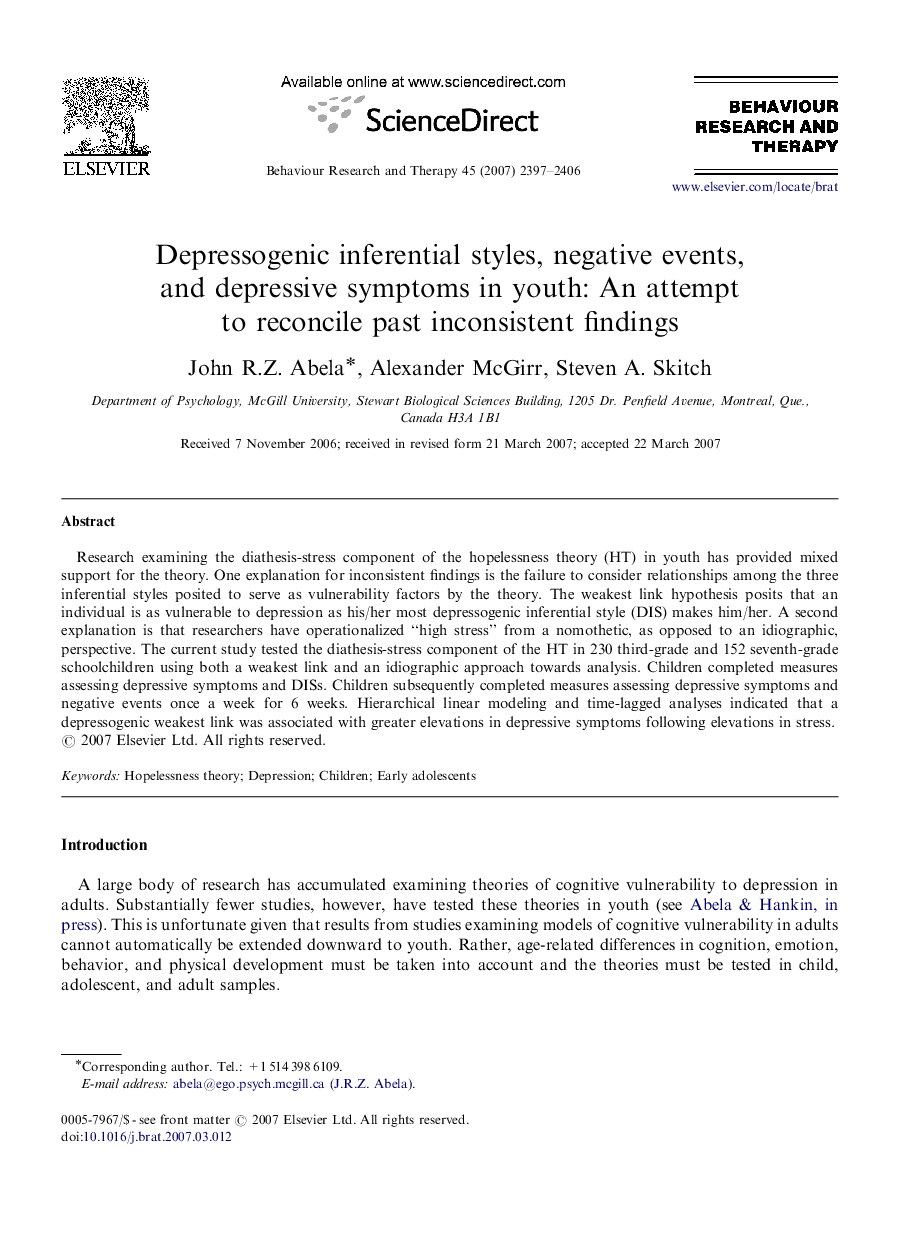| Article ID | Journal | Published Year | Pages | File Type |
|---|---|---|---|---|
| 902301 | Behaviour Research and Therapy | 2007 | 10 Pages |
Research examining the diathesis-stress component of the hopelessness theory (HT) in youth has provided mixed support for the theory. One explanation for inconsistent findings is the failure to consider relationships among the three inferential styles posited to serve as vulnerability factors by the theory. The weakest link hypothesis posits that an individual is as vulnerable to depression as his/her most depressogenic inferential style (DIS) makes him/her. A second explanation is that researchers have operationalized “high stress” from a nomothetic, as opposed to an idiographic, perspective. The current study tested the diathesis-stress component of the HT in 230 third-grade and 152 seventh-grade schoolchildren using both a weakest link and an idiographic approach towards analysis. Children completed measures assessing depressive symptoms and DISs. Children subsequently completed measures assessing depressive symptoms and negative events once a week for 6 weeks. Hierarchical linear modeling and time-lagged analyses indicated that a depressogenic weakest link was associated with greater elevations in depressive symptoms following elevations in stress.
